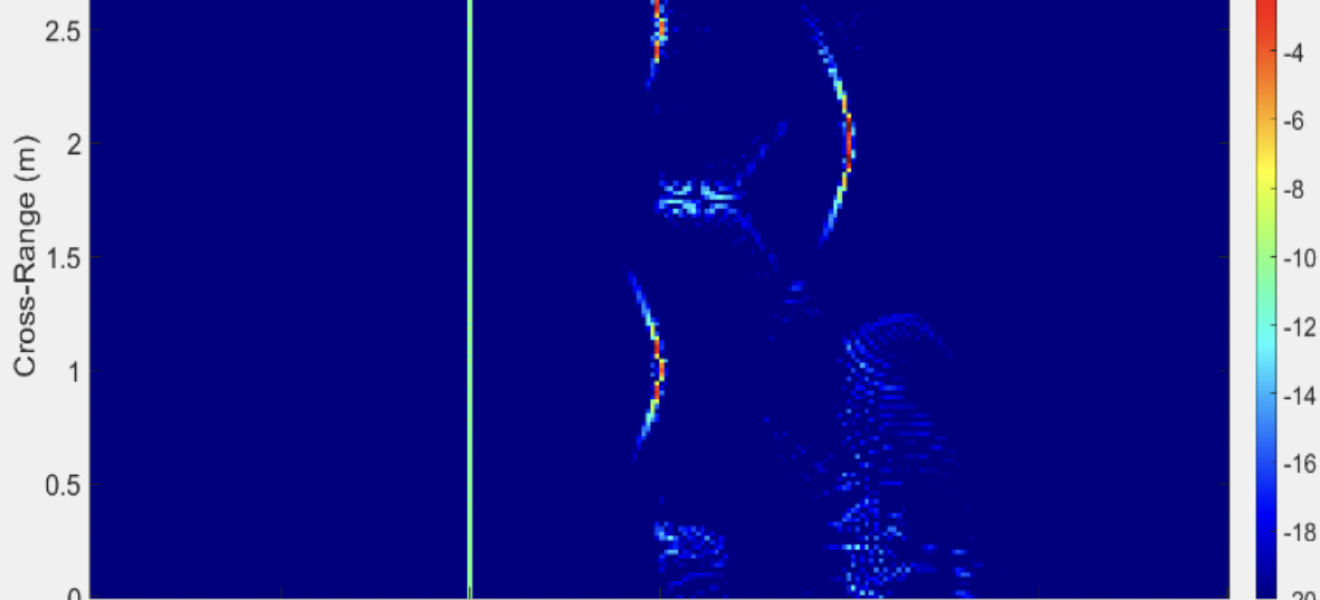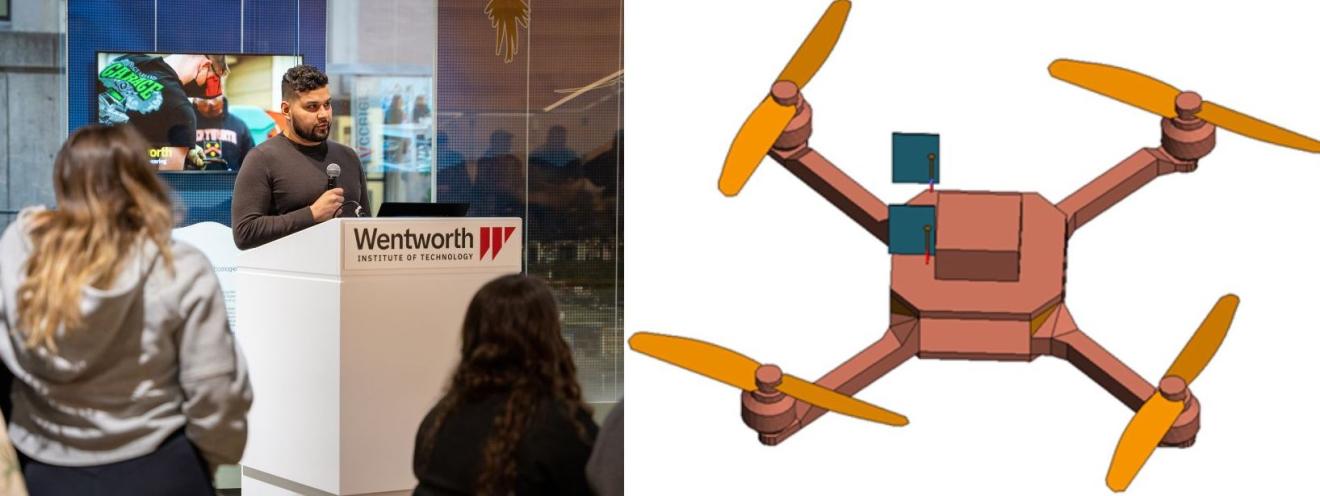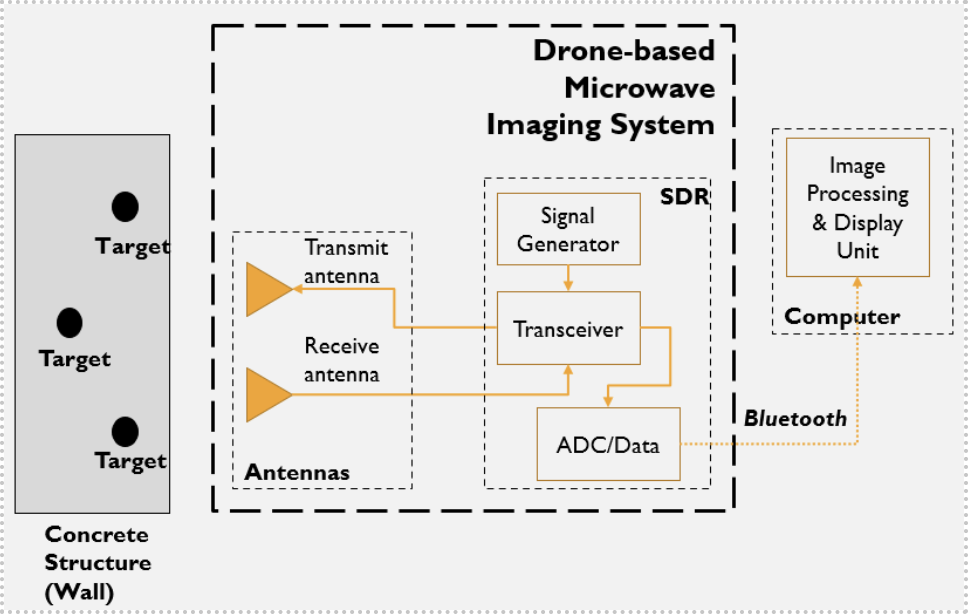X-ray Vision? Wentworth Graduate Student Can See Through Walls

An image captured by the Vivaldi antenna (courtesy of Allan Rodas)
The year is 2000. You’re working on a report (due the next day) and you have one fact left to check. You go to your computer, open your browser…and wait. While you wait, you’re serenaded by the shriek of the computer as it connects to the Internet.
For those lucky enough to grow up in the age of wi-fi and smartphones, this was called “dial-up,” and it was not something that most of us found inspiring.
Unless you’re Allan Rodas, who will graduate this spring with a Master of Science in Electrical Engineering. The Chelsea native can trace a direct line from tinkering with his family’s dial-up computer to his master’s thesis: a microwave antenna capable of detecting structural anomalies in reinforced concrete.
“The antenna transmits energy capable of penetrating a certain depth inside [a] concrete column,” Rodas explained. “It could detect cracks within the concrete subsurface not visible to the naked eye.”
Say, for example, that the City of Boston wanted to survey the Tobin Bridge—specifically the support columns extending into the river—to check for anomalies or defects. “You’d have to have someone swing down or go underneath in a boat,” said Rodas. “Or you could scan it [with] a drone operated by an operator or surveyor.”

So how did he go from taking apart computers to modeling antennas?
“At first I thought that IT was my path,” he shared. “I thought ‘I can’t do that’ when I thought about engineering. But a professor at Bunker Hill Community College encouraged me to apply to an engineering program when I finished my associate degree. I remember applying to Wentworth—I got into the Electrical Engineering program—[and] I was just so captivated once I kind of broke that glass in my brain saying ‘hey…you know, you could do it.’”
Rodas credits coming to Wentworth as a 21-year-old as enabling him to focus on his studies. The focus paid off—he completed a co-op at the MIT Lincoln Lab and Black & Veatch before graduating with a Bachelor of Science in Electrical Engineering. He then worked at Raytheon for several years before starting to think about graduate school.
Wentworth was the obvious choice.
“I could’ve gone anywhere,” he said. “But at another school I would’ve been a number.”
Besides the small class sizes, having an expert in electromagnetics and microwave engineering on the engineering faculty put Wentworth over the top for Rodas. Assistant Professor of Electrical and Computer Engineering Kai Ren has been an invaluable asset to the project from the beginning. Their challenge was to identify a non-invasive technique that improved on the current options—something light and compact that cost less to make.
The two engineers settled on a Vivaldi antenna, a popular choice in microwave imaging because of its electrical characteristics and size: at about 30 mm X 43 mm, a drone won’t even register the additional weight. Named for the famous composer, the antenna tapers up like a trombone.
“When the antenna transmits, especially if you’re transmitting a signal into a concrete column, there’s going to be scatters,” Rodas explained. “Think of if you open a faucet and there’s…water bouncing back. There’s scatters of energy invisible to the naked eye.”

Those scatters are received, processed, and translated into two-dimensional images showing where the concrete is weak. The more concentrated radiated energy the antenna can exert in a specific direction, the deeper the signal can penetrate the concrete in a specific area, and the stronger the received signal will be. The stronger the signal, the more likely it is that engineers can address structural issues before they become failures. Rodas’s simulations have so far produced favorable results.
So, what’s the next step?
“[So far] everything has been on computers and software and simulation,” he shared. “I would love to be able to fabricate [the antenna] and do real-life, real-world testing in a controlled test environment.”
That will have to wait—for now, Rodas is balancing his full-time position as a radar systems engineer at Riverside Research while he prepares for graduation.
